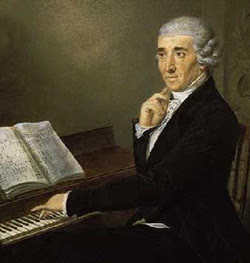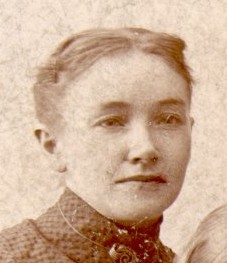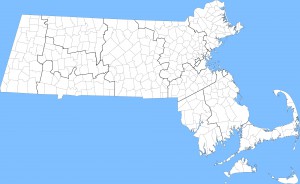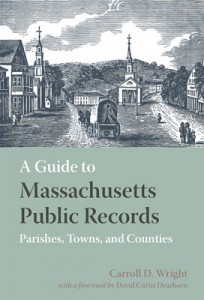 In a recent post I mentioned the Early New England Families Study Project “template” that I use: a Word document file with the categories pre-typed. I keep it on my desktop to open and “save as” the new file name each time I start a new family. For those of you who are knowledgeable about Word template files, you can set it up as such. As I do the research, I dump all the raw material into the form, then whittle it down as I proof, compare, and refine the text. Continue reading Cheat Sheets: Part Two
In a recent post I mentioned the Early New England Families Study Project “template” that I use: a Word document file with the categories pre-typed. I keep it on my desktop to open and “save as” the new file name each time I start a new family. For those of you who are knowledgeable about Word template files, you can set it up as such. As I do the research, I dump all the raw material into the form, then whittle it down as I proof, compare, and refine the text. Continue reading Cheat Sheets: Part Two
Tag Archives: Spotlight
Musicians in the family: Part Two

My great-great-grandfather Francis Grenville Ilsley (1831–1887) belonged to a family of singers and musical conductors and performers. The line apparently begins with his grandfather, Nathaniel Ilsley (1781–1870), who married four times and had (at least) fourteen children, eight of whom were notable in Portland, Buffalo, and Newark music circles. I covered the Portland period – and something of the musical careers of Francis L., Ferdinand, Arthur, Elizabeth, Esther, George, and Ann Ilsley – here.
By the late 1830s, the family had begun to scatter, and my great-great-great-grandfather Francis Lunt Ilsley (1804–1874) was advertising his services as an instructor at the Troy (New York) Academy of Music: his juvenile classes, and those for “young Ladies,” would be “progressively and thoroughly instructed in the elementary principles of vocal music, on the Pestolozzian or inductive system.” Continue reading Musicians in the family: Part Two
Musings from the Catskills

I spent my childhood at our family home in the Catskill Mountains in New York. My roots in the Catskills date back to the mid-eighteenth-century, when the first of the Holdridge line of my family appeared in the area. As far as we can tell, the Holdridges came from Connecticut, settling first in Columbia County, New York, before finally establishing a line spanning many generations in Greene County. While my mother’s family has lived in these mountains for two centuries, it was my father’s family home, which we lovingly refer to as “The Farm,” where I still spend many lazy days of summer. It is a special place for me which connects numerous points of my ancestry. Continue reading Musings from the Catskills
Taking the time to learn about my great-grandfather

One of my favorite family history projects has been organizing the papers of my great-grandfather, James Edward Conlon (1880–1948). He worked in Boston as an antiques dealer and clock maker/restorer from the 1910s through the 1940s. James and his wife Mary had eleven children, including my grandfather John Francis Conlon (1911–1965). My grandfather worked as a firefighter, but in his spare time he painted a number of his father’s clocks, utilizing techniques such as reverse painting on glass and gold leafing. When I began to look through my great-grandfather’s papers, I was surprised to discover a connection to my line of work as a researcher that I didn’t know existed.
Continue reading Taking the time to learn about my great-grandfather
A Ruth by any other name

When I was a child, my classmate Jimmy would often tease me about my middle name: Paine. “Why is your name ‘Pain?’ Were you a pain to your mother when you were born? (Tee-hee!)” When I complained to my mother that my name was a problem and a target for Jimmy’s teasing, she replied, “Well, the name Paine is an old and extremely honorable name. You are, in fact, a descendant of Thomas Paine, who wrote the famous pamphlet Common Sense, which was one of the main inspirations for the American Revolution!” Wow! Was Jimmy impressed!
Not only do I have an old and honorable name, I’m also the descendant of a famous patriot! Of course, Jimmy stopped teasing me and I became a bit of a third-grade celebrity, for a day or two, anyway. Continue reading A Ruth by any other name
Twentieth century research in Massachusetts

Massachusetts is one of a handful or so states that allow relatively open access to vital information. It is certainly possible to conduct family research after 1930 for Massachusetts using a combination of resources. FamilySearch.org provides free access to its record image and index databases that encompass records from around the world. Continue reading Twentieth century research in Massachusetts
Naming a child born out of wedlock

I was recently asked a question about how surnames were assigned to illegitimate children born in the seventeenth century: Was the surname of the father, or the mother, given to the child? Since illegitimate births were uncommon in New England during the 1600s (about 92% of first children born through 1680 were delivered nine months or more after their parents’ marriage), the illegitimate child could have been given the surname of the mother OR the father, depending on the circumstances. Continue reading Naming a child born out of wedlock
Who was Robert Henry Eddy, and why should you care?
 Robert Henry Eddy was a life member of NEHGS who died in 1887 and bequeathed a substantial sum of money to the Society.* Mr. Eddy had been an architect, civil engineer, and in later life, a very successful patent attorney. In 1902, NEHGS used $20,000 of the Eddy bequest to establish the “Eddy Town-Record Fund, for the sole purpose of publishing the Vital Records of the towns of Massachusetts.” This fund would become the basis of a major project to preserve early Massachusetts vital records. Continue reading Who was Robert Henry Eddy, and why should you care?
Robert Henry Eddy was a life member of NEHGS who died in 1887 and bequeathed a substantial sum of money to the Society.* Mr. Eddy had been an architect, civil engineer, and in later life, a very successful patent attorney. In 1902, NEHGS used $20,000 of the Eddy bequest to establish the “Eddy Town-Record Fund, for the sole purpose of publishing the Vital Records of the towns of Massachusetts.” This fund would become the basis of a major project to preserve early Massachusetts vital records. Continue reading Who was Robert Henry Eddy, and why should you care?
Public Records of Massachusetts Parishes, Towns and Counties
 Despite its relatively small size, Massachusetts arguably has the most complete and comprehensive set of records of historical value of any state. Record-keeping began shortly after the first settlements were established, and for the most part the records have survived to a remarkable degree. The records themselves exist at every level of government: state, county, and town.
Despite its relatively small size, Massachusetts arguably has the most complete and comprehensive set of records of historical value of any state. Record-keeping began shortly after the first settlements were established, and for the most part the records have survived to a remarkable degree. The records themselves exist at every level of government: state, county, and town.
By the mid-nineteenth century, agitation grew for establishing a public records commission, such as existed at the time in England, with the power to bring all the Commonwealth’s important records into a single repository. Other parties objected to this idea, both because of the possible expense involved, but mainly because many local officials objected to giving up custody of their records. Continue reading Public Records of Massachusetts Parishes, Towns and Counties
The prisoners of Peddocks Island

The Boston Harbor Islands are popular destinations for camping, sailing, and exploring. Their development and importance to Boston’s history may perhaps be seen most clearly in the well-preserved Fort Warren on Georges Island. An often-overlooked destination among the islands is Peddocks Island, which hosts the remains of Fort Andrews, a defensive compound built at the beginning of the Spanish-American War in 1898. It was named by the land donor Eliza Andrews after her uncle, Civil War brigadier general Leonard Andrews, and was used as a training station for soldiers during World War I and World War II. The structures left today include a barracks, firehouse, stables, gym, and chapel.
Peddocks Island was also used as a prisoner of war camp, in which at least one thousand Italians captured in North Africa were detained following Mussolini’s surrender to the Allied forces in 1943. Continue reading The prisoners of Peddocks Island